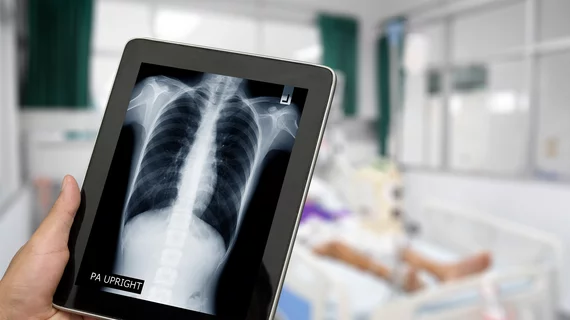Nonphysician providers are interpreting more imaging exams—but still less than 2%
Nurse practitioners and physician assistants have started performing more and more imaging-guided procedures, but what about diagnostic imaging interpretations? According a new study published in the American Journal or Roentgenology, nonphysician providers (NPPs) are reading an increased number of imaging examinations, but it’s still a relatively small percentage.
“National radiology societies have opined that imaging interpretation should fall entirely within the domain of radiologists rather than NPPs,” wrote Valeria Makeeva, MD, of Emory University in Atlanta, and colleagues. “Attendees of radiology's 2003 Intersociety Conference, for example, explicitly stated that ‘image interpretation by radiology physician extenders is not appropriate.’”
Makeeva et al. examined Medicare data from 1994 to 2015. Overall, diagnostic imaging utilization rates for Medicare fee-for-services beneficiaries increased by 24% during that time period. The number of diagnostic imaging services billed by NPPs increased a whopping 14,711% by 2015, the authors found, but that still represented just 1.27% of the total number of such examinations.
“Using Medicare claims data, we have shown that NPP roles in rendering diagnostic imaging interpretation services across the United States are increasing,” the authors wrote. “However, when compared with the overall numbers of diagnostic imaging interpretations, NPPs still rarely render diagnostic imaging services.”
On a state-by-state level, NPP-billed imaging was the most common in South Dakota (7,987 services per 100,000 Medicare beneficiaries) and Alaska (6,842). It was the least common in Hawaii (231 services per 100,000 Medicare beneficiaries) and Pennsylvania (478). In addition, the modalities where the sharpest increases in NPP-billed utilization occurred were x-ray and fluoroscopy.
“Although considerable state-to-state variation exists in the rates in which NPPs render diagnostic imaging services, likely in part related to unique state level scope of practice laws and regulations, these rates are uniformly low,” Richard Duszak, MD, professor of radiology and imaging sciences at Emory University and senior affiliate research fellow at the Harvey L. Neiman Health Policy Institute, said in a prepared statement. “At present, the near-term likelihood of NPPs acquiring substantial diagnostic imaging market share is extremely low.”
Related Radiology Non-physician Providers Content:
ACR Association announces winners of grants to fight nonphysician scope of practice gains
Neiman Health Policy Institute finds 18% increase in radiology employed non-physician providers
New York grants nurse practitioners full practice authority, despite radiologist opposition
Nonphysician providers are interpreting more imaging exams — but still less than 2%

